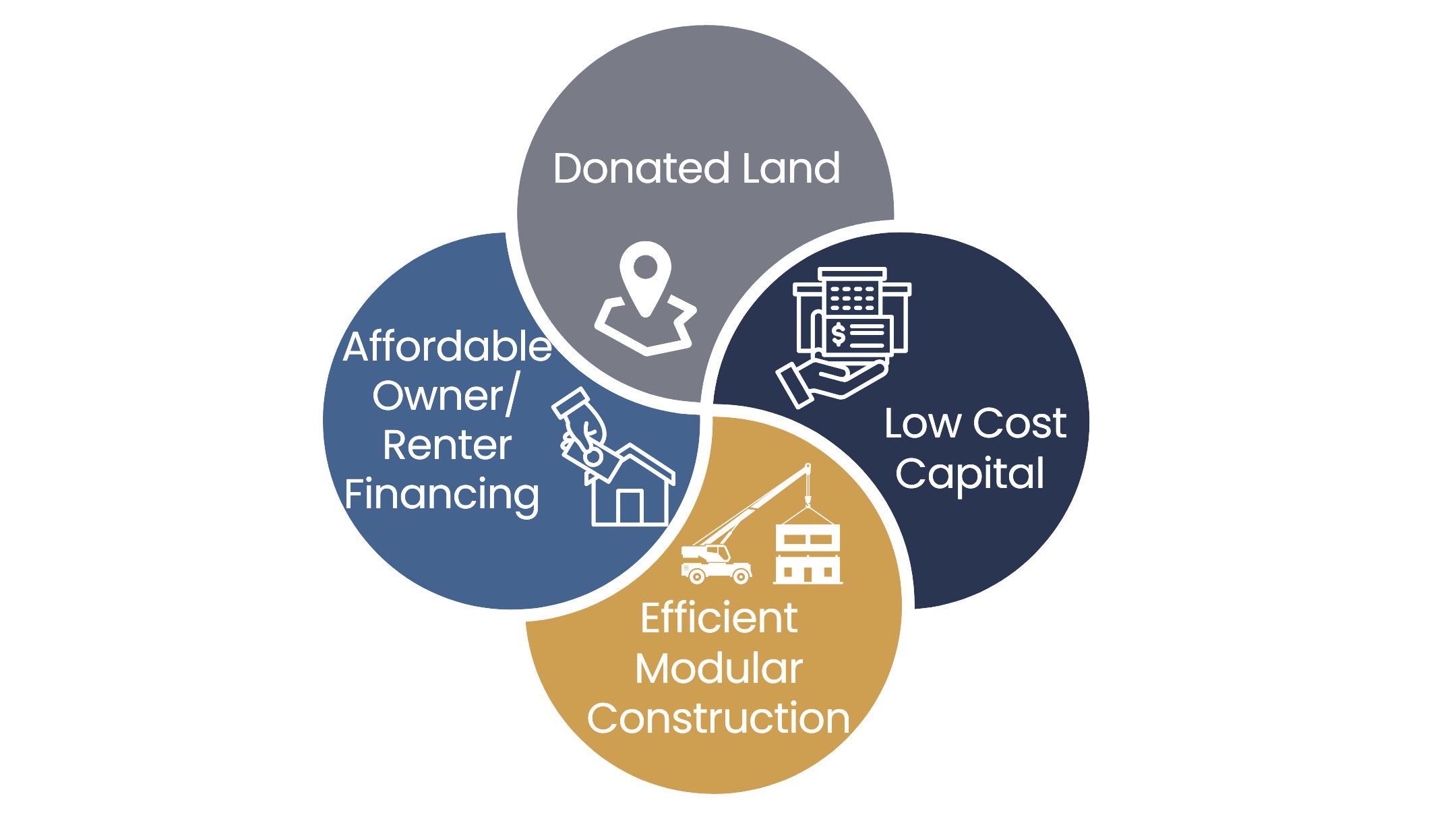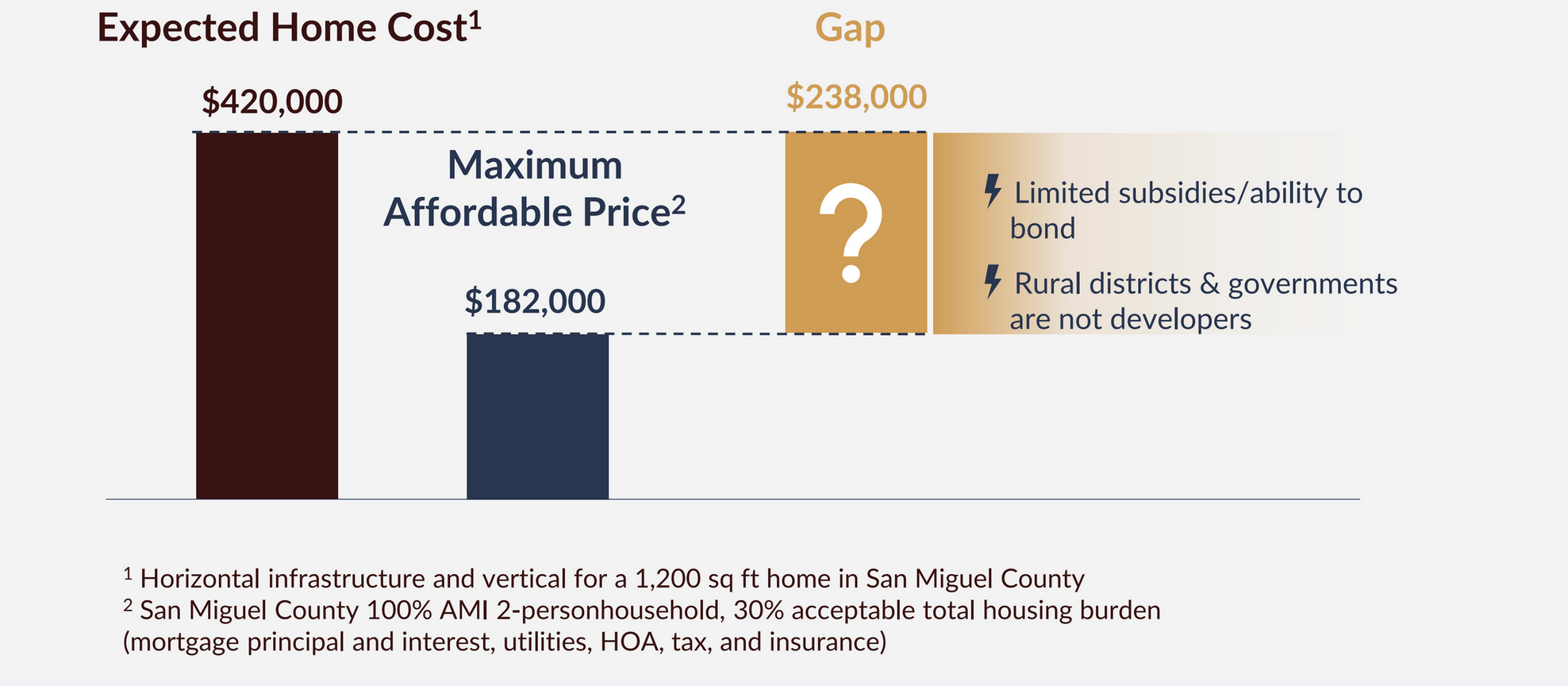The Rural Homes Approach
Rural Homes Colorado is a nonprofit housing developer currently building for-sale workforce housing neighborhoods. By integrating donated land, off-site factory-built construction, and low-cost financing into a toolkit, we are restructuring the way homes can be built for our region’s essential workforce: teachers, medical professionals, immigrants, federal employees and those that make a community function. Rural Homes plans to directly address key determinants of public health and long-term economic sustainability by adding new homes to the Colorado housing market, which is commonly saturated with old and dilapidated properties or inaccessible pricing.
In most Colorado communities, home prices are outpacing wages, making homeownership increasingly inaccessible to working households.
Rural Homes aims to build new housing accessible to the workforce
Donated Land
We reduce the overall property values of our homes by securing land donations from partners like municipalities or school districts, or by securing funding to purchase land from private donors and/or state organizations. The ideal site has strict criteria in order to control the per-unit costs of building the homes. They are flat, infill, and adjacent to existing civic infrastructure in order to minimize grading, new street construction, or the extension of water and sewer lines.
Low Cost Capital
Rural Homes partners with Colorado’s community organizations and philanthropic entities that are interested in new approaches to building workforce housing. We’ve raised construction finance loans with 0.5% interest and below by working with philanthropic funders such as: The Colorado Health Foundation, El Pomar Foundation, Donnell Kay Foundation, Kenneth King Foundation, Caring for Colorado, Dakota Foundation and Boettcher Foundation.
Furthermore, the Department of Local Affairs and The Division of Housing have matched the philanthropic dollars donated to the projects. We also pursue additional “gap financing” funding to subsidize additional costs such as infrastructural improvements related to the project, with the goal of reducing the final price of each unit built.
Efficient Modular Construction
Standard stick-built construction is expensive and inefficient: on average, 30% of the material purchased for home construction ends up in a dumpster. In addition to this, the local labor force is (mostly) involved in high-end home construction, so even if subcontractors are compelled to work on affordable housing, the market sets a price of labor too expensive to build affordably.
By partnering with innovative Colorado companies such as Fading West (modular construction), we have lowered on-site construction costs and reduced building time. Fading West builds 85% of the homes in their factory and ships them to the site in separate modules, allowing us to save money on subcontractors by reducing the time it takes to build the house.
Affordable Owner/Renter Financing
Rural Homes works with lending partners and local foundations to lower interest rates and provide down payment assistance to homebuyers, essentially lowering the cost of the home and making the homes we build accessible to folks with lower incomes.
Community Led Process
Each project is guided by a community driven process that integrates the strength of each community with the goal of building new neighborhoods that improve economic, social, cultural, health, and environmental outcomes. Networks of residents, local governments, affordable housing advocates, business owners and government officials are all required to build places that reflect the desires of the community.
An Example of the Problem In San Miguel County
Rural Homes does business under Rural Homes LLC, which has the Sole Member of Paradox Community Trust, the official name of our 501-C3 nonprofit organization.



